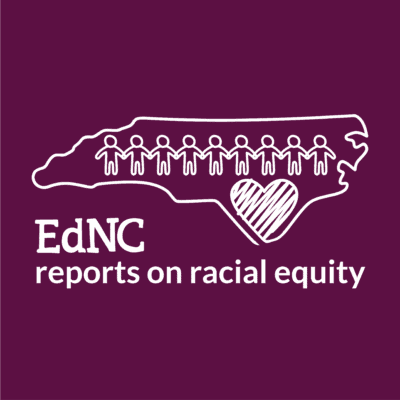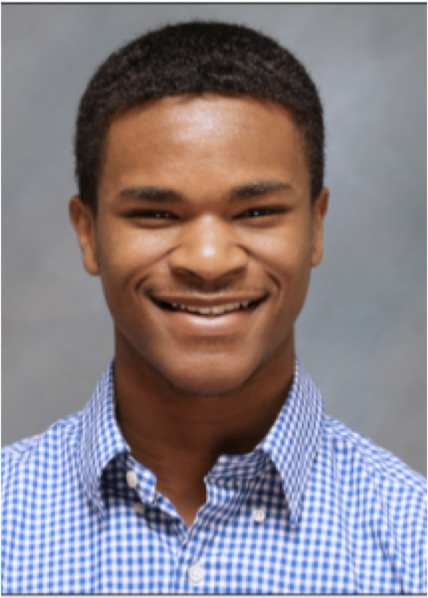
Maya Logan says she’s sick of taking student equity surveys. She took them in middle school, in high school, and recently at UNC-Chapel Hill.
Those surveys capture student thought. Yet they end up in the hands of adults who decide what, if anything, will become of the students’ ideas.
“I feel like some of our administrators and even educators fail to realize and recognize that students are the main stakeholders,” said Logan, a junior at UNC who is the undergraduate Senate’s speaker pro tempore.
“They fail to realize, at the end of the day, the outcome, the decision — whether it’s in the student’s interest or not in the student’s interest — it will still impact the student regardless.”
She wants more influence over those decisions. Particularly racial equity decisions. And she’s not the only one.
Recent webinars by the Public School Forum and Hunt Institute featured student voices. These young leaders noted that they live the consequences of systemic racial inequities every day. And they’re not waiting passively for someone else to fix the problems.
“We have our work cut out for us as educators,” said Ronda Taylor Bullock of we are, an organization working to extend anti-racist education, who moderated one of the student panels. “And we need to listen to the young people, because you all have the answers.”
Actions driven by experience
Students don’t just study educational equity issues; they live them.
Reagan Razon remembers running down a school hall playing tag with friends when she was in kindergarten. Running in the halls was a no-no. But when kids are in hot pursuit with that outstretched tag hand, you run. And they were all running.
“Sadly, I was the only one who got in trouble,” said Razon, now a senior at Enloe High School in Raleigh. “I got sent to the thinking table. And while getting sent to the thinking table doesn’t mean that much, you just sit and think about your actions. If you step back and look at the grander scheme of things, why was I the only one that was targeted?”
That word “targeted” is powerful. Here’s why.
Sign up for the EdDaily to start each weekday with the top education news.
These student leaders say they often encounter resistant comments about disparities in discipline. They sound something like: If you don’t want to get in trouble, follow the rules.
But kids make mistakes, Razon said. Some mistakes are just age-appropriate actions. They’re essential to the growing-up process. Kindergartners receiving appropriate punishments for running the halls can learn a safety lesson.
But punishing Black and Brown kids more severely, or only disciplining them among a crowd, spoils the learning opportunity. A different takeaway supplants the safety lesson: Adults will target me and treat me more harshly because of the color of my skin.
Experiencing racial bias
Adult education leaders are rightly paying attention to data and outcomes. Meanwhile, these young education leaders are paying attention to everyday experiences that just don’t sit well. The ones that make them feel different.
Razon remembers people encouraging her to straighten her hair or praising her for sounding white. Underpinning these micro-aggressions is the message that blackness is not professional.
“This just speaks to the various informal and formal ways that we police student identity — especially Blackness and Black student identity,” she said.
For Black girls, in particular, Razon said. She recalls dressing up as twins with her friends during a spirit week. They wore athletic shorts and T-shirts.
School administrators cited Razon for violating the dress code because her shorts were too short. They didn’t cite her friends.
“When we’re wearing the same exact outfit, it’s seen differently on me than it is on my white peers,” she said. “And that could be due to the over-sexualization of Black girls — how we’re seen as less innocent.”

Maya Logan 
Seth Bellamy 
Reagan Razon
In a school system with mostly white, female teachers, Seth Bellamy says, Black boys feel the micro- (and not-so-micro-) aggressions, as well.
“It’s important that we understand that assimilation is a very important part of the hidden curriculum in schools,” said Bellamy, a high school junior at School of Inquiry & Life Sciences at Asheville.
Bellamy said teachers sometimes punish students of color for not conforming to whiteness. Teachers dismiss Black students as inarticulate or even belligerent, he said, just because they don’t sound more like “white normal.”
“[There’s] this continual question of why African American students are not engaged in school, or why don’t they go out for clubs or why don’t they participate in class,” he said. “But every single time I try to, every single time I try to take that step into achieving what you want me to be, I’m taken and knocked back down five steps.”
Experiencing confirmation bias
Bellamy said determinations around Academically and Intellectually Gifted status, and access to Advanced Placement or International Baccalaureate classes, work to segregate classrooms.
Mostly, he said, schools give white students accelerated opportunities. The system produces labels and perpetuates false narratives by creating “a cohort of homogeneity within each and every class,” Bellamy said.
“And within all of that you have that bias and you have that idea where [white students can believe] we are able to be better than you, only because — look around you. We have a system that’s confirming the biases of our students.”
This summer, working with the Massachusetts Institute of Technology, Razon did research that explored the school-to-prison pipeline through mathematical study.
More on equity in schools



She found that students at mostly white schools perceive resource officers as present to protect against outside threats. At mostly Black or Brown schools, the perception was that officers were there to protect students from other students. The actions and perceived biases of officers drive these perceptions.
Her research confirmed an experience she had when a resource officer at Enloe once said, “How do you catch a criminal? You see who kneels for the National Anthem.”
“I feel like this really highlights the racial biases,” she said. “At the end of the day, we’re all susceptible to outside threats. But when we’re focused more on criminalizing students rather than protection, that’s where we really go wrong here.”
That’s particularly true when the bias comes from a resource officer who has a weapon and authority to get physical.
“These little racial biases can manifest into action,” she said. “That could turn into a choke hold on a Tuesday.”
Taking action against bad experiences
In June, Razon and three other students started a petition to ban officers from Wake County schools. Now, she’s working with fellow students and community groups to have “peacebuilders” put in schools.
Connecting what she lives to what she researches to what she does, Razon is just one example of how student leaders are on the front lines of combatting racial inequities in schools.

Bellamy co-founded Keeping it REAL, the first racial equity club at his school and in his school system. He’s working to empower more student leaders in the fight for racial equity. He also co-founded a racial equity ambassador program where students become teachers, working with teachers on issues of cultural competencies and how to be actively anti-racist.
Greear Webb is a sophomore at UNC-Chapel Hill. He has co-founded two youth-led nonprofits, NC Town Hall and Young Americans Protest.
This summer, he helped lead efforts calling for solidarity and peaceful protest.
Webb and his fellow student panelists at Color of Education showed up with a message.
“There has to be special attention paid to our Black and Brown students because for so long we’ve been ignored,” Webb said. “Students, we’ve been on the front line — young people have been on the front line — of every social movement in this nation. And so we’re going to continue fighting.
“… But it’s really time for our teachers and our governmental leaders to stand up and to wake up and say, ‘Wow, what can we do to implement and execute the ideas that our students are telling us?’ Because I really believe that many times — many times — students know how we are best educated, and how we are best supported, and how we can feel safe in our schools.”
Recommended reading






